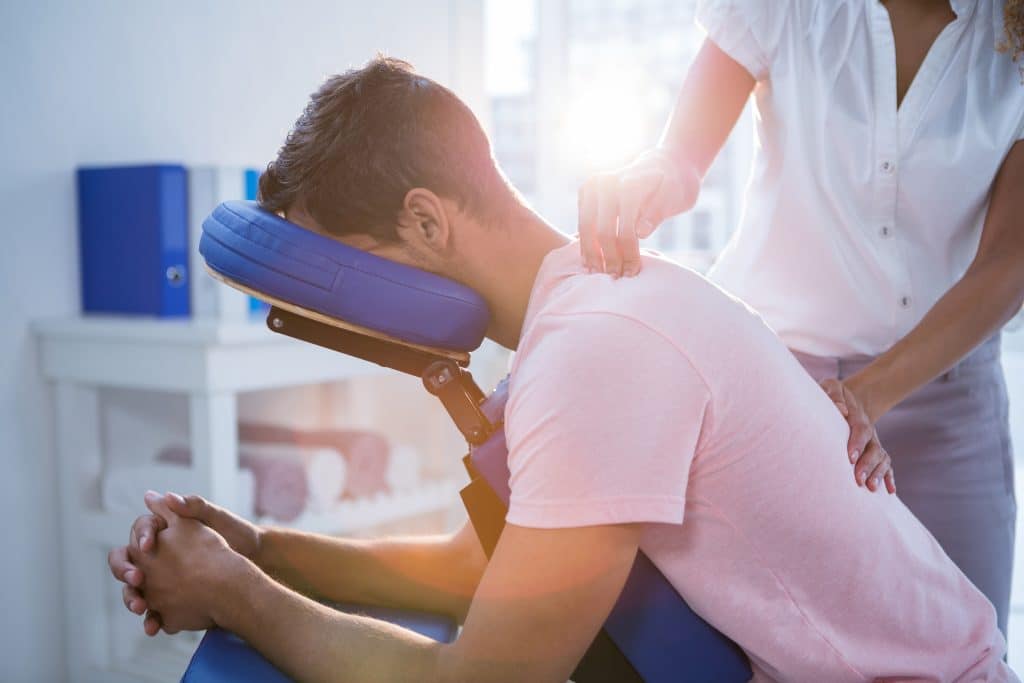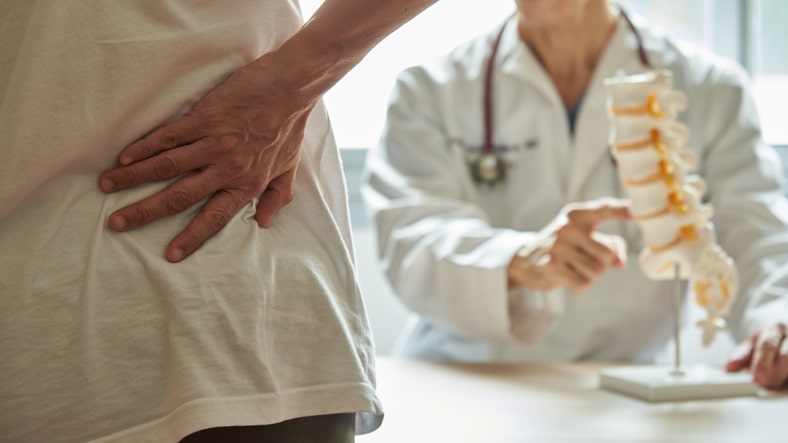Back pain is the single leading cause of disability worldwide, the most common reason Americans miss work, and a near-certainty for 80% of the population, studies show.
It’s no wonder such a drag on our quality of life drives so many patients to seek out drastic solutions like surgery. But experts say that shouldn’t be the first choice.
“You want to exhaust all the conservative treatments first. That’s the standard of care,” says Randall Graham, MD, neurosurgeon on the medical staff at Methodist Moody Brain and Spine Institute. “Surgery is a last resort.”
Studies show up to 80% of us will experience lower back pain at some point, and the first instinct for many of them may be to grimace and bear it.
That, too, is the wrong approach, says Shaun Garff, DO, sports medicine specialist on the medical staff at Methodist Charlton Medical Center.
“People who come to that mindset, they’re at a loss. They don’t know what else to do,” Dr. Garff says. “But there’s always something you can do. It’s just a matter of finding what that is.”
Identifying that solution is Dr. Garff’s and Dr. Graham’s specialty, and both agree that our quality of life depends on a healthy back.
“You only get one back,” Dr. Garff says. “You can replace your knee, your shoulder, or your hip. You can’t replace your back. You’ve got one shot at this.”
So here are a few options, from stretching and core exercises to medications and dietary changes, and finally, surgery.

RELAX, THEN REHAB
Back pain can be caused by any number of conditions: lumbar arthritis, bulging or herniated discs, and even spinal stenosis, a narrowing of the spinal canal that usually causes pain in the legs, too.
Much of the time, however, the problem isn’t structural. It’s a strained muscle, tendon, or ligament. That’s why the first step isn’t to stretch, but simply to relax.
“If your muscles are tense and you have a lot of pain, it’s really hard to exercise and stretch. So you’ve got to relax first,” Dr. Garff says.
There are several ways to get back muscles to relax: applying a heating pad or a cold pack, meditation, massage therapy, acupressure, or simply a warm bath.
The next step is to get moving, first by stretching and then through exercise, Dr. Garff says.
“Movement encourages blood flow and flexibility,” he says. “Those are the things that allow your body to heal and loosen up and decrease inflammation and reduce the pain.”
When Dr. Garff encourages his patients to strengthen their core, he’s not asking them to work out at the gym or sweat through a brutal set of crunches, which will only worsen the pain.
“It’s daunting to think about doing core exercises with back pain,” he says. “Find your five or 10 minutes to relax and exercise your back every day. You’d be amazed at what that will do for you in the long term.”

MEDICINE AND DIET
Patients often reach for over-the-counter and prescription medications first when they experience backaches or muscle spasms, but drugs only provide short-term fixes without addressing the root of the problem.
Many even bring complications of their own with unwanted side effects. For example, overusing NSAIDs — nonsteroidal anti-inflammatory drugs — can lead to ulcers or kidney damage, while muscle relaxants can cause drowsiness.
Prescriptions like oxycodone and hydrocodone can fix the pain, but dependence and addiction are major concerns.
Weight loss is another option to manage back pain because being overweight or obese puts more stress on the spine and raises the risk of back problems. Those who carry extra weight in their midsection are especially prone because their center of gravity strains back muscles and the other connective tissues that support the spine.
Making simple dietary changes and resolving to eat less and eat healthier can relieve some of the burden on your back and make exercise less intimidating.
Try taking Methodist’s free back pain health assessment to help identify your risk factors.
IS SURGERY THE ANSWER?
If a more conservative strategy offers no relief, it may be time to consult a neurosurgeon like Dr. Graham, who can piece together a patient interview and a battery of physical exams to diagnose what’s causing the pain.
Just don’t expect surgery to be his first choice.
“A very small percentage of the causes of back pain get better after surgery,” he says. “The No. 1 cause for failure in any kind of back surgery is the operation being done for the wrong reasons.”
For the minority of patients who do need surgery, Dr. Graham groups cases into two categories: decompression and fusion.
Laminectomies and discectomies are examples of this surgery, which relieves pressure on the spine caused by degenerative arthritis, spinal stenosis, or a bulging or herniated disc.
“You’re taking bone away that’s pinching nerves,” Dr. Graham says.
He says most operations like this can be minimally invasive, take only about an hour, and allow the patient to go home the same day.

SPINAL FUSION
The other broad category of back surgery involves spinal fusion, essentially creating a solid unit from two or more vertebrae to stabilize the spine after a disk is removed or when arthritis or a fracture weakens the spine.
“With decompression, you’re taking stuff out. With fusion, you’re actually leaving an implant,” Dr. Graham explains.
These screws, rods, or plates work together with bone or bone-like implants placed between the vertebrae to encourage them to grow together so there’s less movement in the spine.
Expect this surgery to require two or three days in the hospital, potentially followed by several months for the bones to fuse together. Patients may also require physical therapy to learn how to walk, sit, and stand while keeping their spine properly aligned.
Fusion can be an effective treatment and generally relieves symptoms in the short term, but it also tends to be a temporary fix. That’s because the vertebrae around the fused section are now under increased stress.
What’s more, surgery won’t cure osteoarthritis, the degenerative illness often responsible for the problem. The bottom line, Dr. Graham says, is to understand all your options before rushing into surgery to solve your pain. After all, you only have one back.
“I’d rather have 15 patients doing really well, even without surgery, than have 30 choose surgery for the wrong reasons,” he says. “To me, that’s not a success.”

